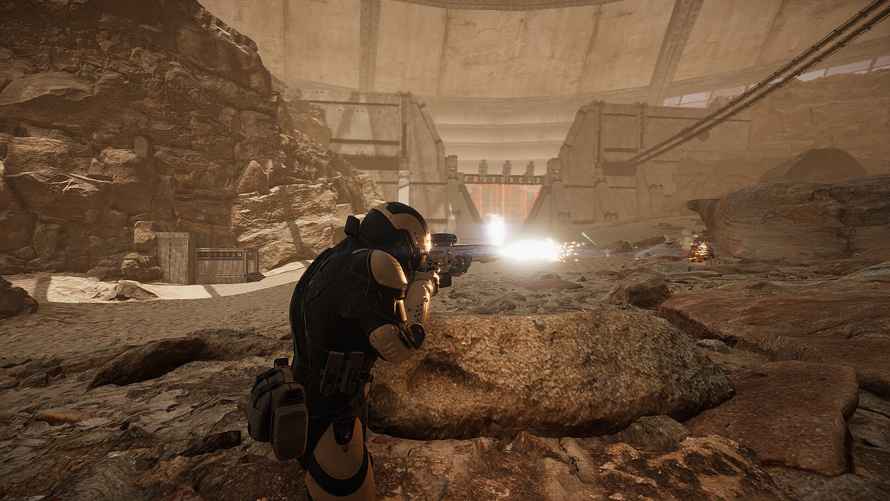Silica Preview
Genre hybrids can be a risky proposition for developers. When they work, combining two or more types of game produce an experience greater than each single component. Of course, sometimes two genres feel like a mismatch. With Silica, the upcoming sci-fi RTS and shooter hybrid from Bohemia Interactive, the genre mashup feels natural, even if the fun feels currently a little unbalanced.
Huge Machines and a Sense of Scale
Silica takes place on a dry and dusty planet, distant in both time and space. Influenced by classic strategy games like Dune and Starcraft, the real-time strategy mode places the player in the role of Commander. The mechanics and gameplay loop are familiar ones: gather resources, construct buildings, produce units, and research upgrades. The RTS aspect of Silica feels classic and easy to jump into.

There are two races in Silica, humans and the bug-like alien inhabitants of the planet. You can command either force, and construction, gathering, and units are naturally unique to each. Humans and the hive-based aliens gather different resources but both make use of the planet’s crystal fields.
One of Silica’s most unique features is its sense of scale. Where most RTS games have units and structures way out of scale with their fighting units and vehicles, Silica opts for realism. Buildings are massive. Harvester vehicles are lumbering, stories-high, and really impressive. It was very exciting to encounter both human and alien structures in the first-person mode. The developers said that all units are grounded in physics and behave realistically.
Boots on the Ground
The other component of Silica’s genre mashup is its first-person shooter mode. You can leave base building and other commander tasks to the game’s AI, and attack or defend as a soldier, part of a squad. Just as in the RTS mode, you have a series of objectives, like destroy a specific building or enemy unit.

While you can’t jump between the commander and a FPS unit during a game, you can jump between different types of ground units and vehicles. Vehicles are important because Silica’s planet is immense and distances between objectives are sometimes vast. Jumping between human soldier types was fun, but also pretty familiar. On the other hand, inhabiting one of Silica’s alien bugs and crab-like creatures was more unexpected. Some of them are massive, others fast and nimble. They also have counterparts to human weapons and defenses.
During a developer-led playtest, I got to experience life as both a human soldier and an alien insect. My biggest issue with both was that the planet’s vast and largely empty nature meant a lot of dull travel to objectives, at least without hitching a ride on a vehicle. Insects move faster “on foot” but often rely on melee-type of attacks. Human soldiers can snipe from a distance, putting the bugs at a disadvantage. More than once I spent minutes moving to the objective, only to die and respawn at a far-away base. I also was a bit frustrated by the game’s objective markers that don’t really take elevation into account and a near featureless map.
It’s a Balance
I spent some alone time as a commander, and I felt like it was a more engaging experience. There’s always something to do and the flow was familiar. I liked the design and scale of the structures. The slow movement of vehicles really suggested weight and power. There are still some pathfinding issues. I had one massive Harvester just blow up when it grazed the side of a building.

Aside from balancing issues and pre-release bugs, I enjoyed Silica’s mashup of genres. The developers said that they wanted “to be true to each genre,” and I think they are definitely on target to reaching that goal. Neither genre feels underdeveloped but, at the same time, the template is there for lots of future growth and added content.
Silica is available in early access on May 3, 2023.

